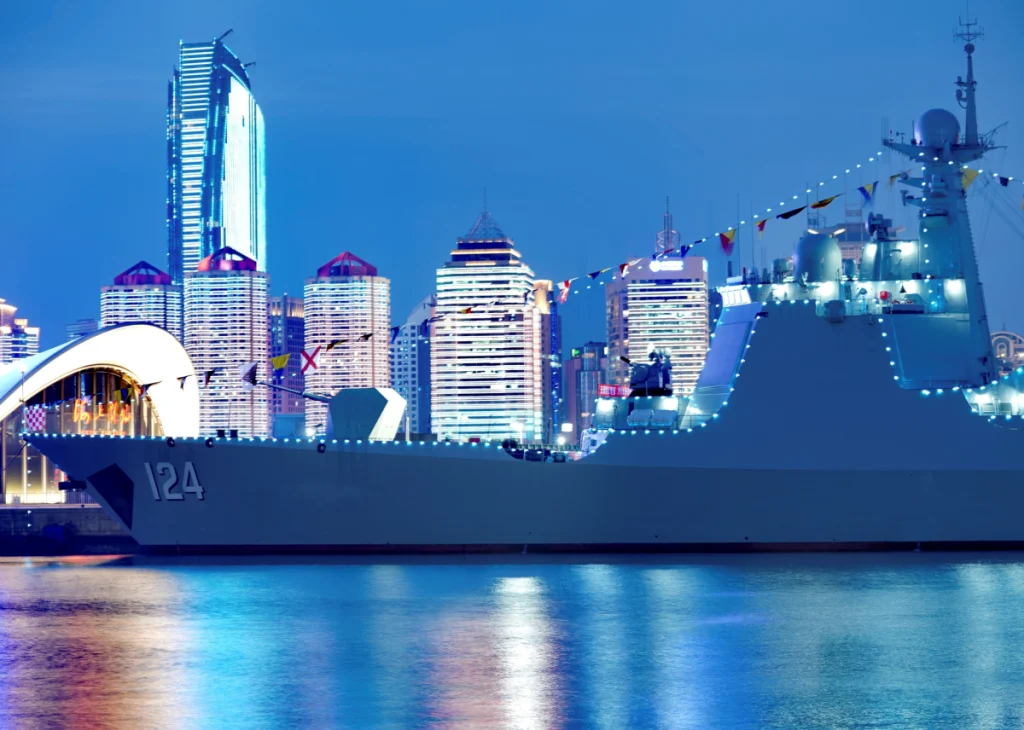China’s Naval Power Encircles Japan: A New Pacific Reality
In a bold demonstration of maritime prowess, a Chinese naval flotilla recently completed an unprecedented journey around nearly all of Japan’s territory in less than a month. The Japan Defense Ministry tracked this strategic circumnavigation, which included two Type 052D destroyers—the CNS Huainan and CNS Kaifeng—accompanied by the Type 903A replenishment ship CNS Dongpinghu. These vessels, particularly the destroyers with their vertical launch systems capable of firing 64 missiles each, represent China’s growing naval capabilities in the region. The fleet’s movement began in mid-September when it transited the Tsushima Strait between Japan and South Korea, continued through the Sea of Japan, passed through the Soya Strait near Hokkaido, sailed across the North Pacific, and finally returned to the East China Sea via the Miyako Strait between Japanese islands. This methodical journey effectively surrounded Japan’s main territories, excluding only some islands west of the Miyako Strait and east of Taiwan.
This naval maneuver represents more than just a routine deployment; it symbolizes China’s expanding military footprint in the Western Pacific and its challenge to the established maritime order. According to Pentagon assessments, China now operates the world’s largest navy by hull count, with more than 370 ships and submarines at its disposal. This growing fleet enables Beijing to project power farther from its shores and increasingly contest areas once dominated by the United States and its allies. The circumnavigation of Japan marks the second such operation around a major U.S. ally this year, following a similar movement around Australia from February to March. These systematic deployments appear designed to demonstrate China’s operational reach and to normalize its presence in waters traditionally dominated by American and allied naval forces.
Japan’s strategic importance cannot be overstated in the context of Indo-Pacific security. As a key U.S. ally, Japan forms an essential component of the “island chain strategy”—a conceptual defensive architecture that stretches across the Western Pacific. This strategy envisions two north-south lines leveraging U.S. and allied territories to project military power and deter potential Chinese aggression. The first island chain runs from Japan through Taiwan, the Philippines, and down to Malaysia, while the second extends farther east, including the Mariana Islands and Guam. China’s ability to operate freely around these chains represents a significant strategic development that challenges the foundational assumptions of regional security arrangements established in the post-World War II era.
The Japanese response to China’s naval activities reveals growing concern about Beijing’s intentions. Japan’s Defense Ministry promptly deployed maritime self-defense forces, including aircraft and ships, to monitor the Chinese flotilla as it approached Japanese waters. The 2025 defense white paper explicitly acknowledges that “China has been intensifying its activities across the entire region surrounding Japan,” including areas beyond the first island chain and extending to the second. This increased activity occurs against the backdrop of ongoing tensions over the Senkaku Islands (called Diaoyu by China) in the East China Sea, which both nations claim. From Japan’s perspective, these naval maneuvers represent part of a broader pattern of assertive Chinese behavior that potentially threatens regional stability and established territorial boundaries.
China, for its part, frames its naval activities differently. The Chinese Defense Ministry has previously accused Japan of “closely tracking, monitoring and harassing operations of Chinese vessels and aircraft,” claiming such actions “endangered the safety” of Chinese assets and could “easily trigger incidents at sea or in the air.” This rhetoric reflects China’s position that its naval operations are legitimate activities in international waters, consistent with its status as a rising maritime power. Beijing’s strategic calculus likely includes demonstrating its ability to operate in waters surrounding potential adversaries, establishing operational familiarity with critical maritime chokepoints like the various straits around Japan, and signaling its determination to challenge what it perceives as U.S.-led containment efforts in the Western Pacific.
Looking forward, these developments portend significant implications for regional security dynamics. China will almost certainly continue and possibly intensify its naval activities around Japan and other U.S. allies in the Indo-Pacific. This presents Japan with difficult strategic choices about how to enhance its defensive capabilities in response, likely requiring deeper coordination with the United States and potentially other partners such as Australia and India through frameworks like the Quadrilateral Security Dialogue. The maritime contestation between China and the U.S.-led alliance system represents one of the defining security challenges of the early 21st century. As China’s navy grows more capable and assertive, and as U.S. allies like Japan face increasingly complex security environments, the potential for miscalculation or unintended escalation remains a persistent concern. The patterns of naval activity now unfolding around Japan may well presage the future contours of great power competition in the Indo-Pacific region.














